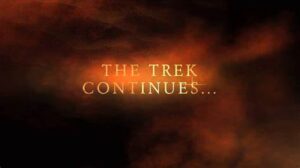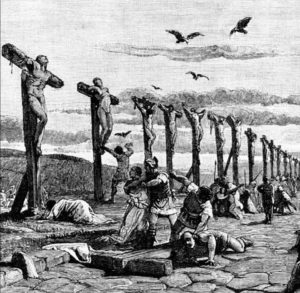An Undisputed Messiah Requirement
One Messiah requirement is common to both Judaism and Christianity. It is a lineage requirement built upon by a series of prophecies beginning in Genesis with a prophetic blessing by Jacob, then the Law handed down to Moses, and reinforced by many prophecies thereafter.
Prophetic blessings were given by Jacob, aka Israel, to each of his sons. One son, Judah, received the blessing that his family-tribe’s lineage would be like a lion that would possess the “scepter”:
Gen 49:8-10 “Judah, [as for] you, your brothers will acknowledge you. Your hand will be at the nape of your enemies, [and] your father’s sons will prostrate themselves to you. A cub [and] a grown lion is Judah. From the prey, my son, you withdrew. He crouched, rested like a lion, and like a lion, who will rouse him? The scepter shall not depart from Judah, nor the student of the law from between his feet, until Shiloh comes, and to him will be a gathering of peoples.”(Complete Jewish Bible)[1]

Rabbi Rashi, one of most revered Rabbi sages, identified Shiloh as the “King Messiah, to whom the kingdom belongs.” According to Rashi, the“scepter” refers to the royal lineage of “David and thereafter.”[2]
Centuries later at Mt. Sinai, Moses received the Law from God defined in the books of the Torah – Genesis, Exodus, Leviticus, Deuteronomy and Numbers. Much more than just the 10 Commandments, the Law of God also included the promise of a future kingdom in an unnamed place God would choose.[3]
Leaving Mt. Sinai on their quest to reach the promised land of Abraham, the tribes of Israel defeated one enemy after another creating dread by those kings and nations lying in their path. One enemy king, Balak, thought he could cleverly use God to prevent the defeat of his Moab nation.
Persistently, Balak asked the prophet Balaam to place a curse from God on the Hebrews, but the prophet refused. Finally, Balaam instead issued a momentous Messiah prophesy saying:
Nm 24:17 “I see him, but not now; I behold him, but not near; A star shall come forth from Jacob, A scepter shall rise from Israel, And shall crush through the forehead of Moab, And tear down all the sons of Sheth.”(New American Standard Bible)
“Scepter” or “staff” is translated from the same Hebrew word shebet appearing in Jacob’s blessing of Judah and once again, Rabbi Rashi said shebet represents “a king who rules dominantly” pointing to King David.[4] A star, the Rabbi describes, “shoots out like an arrow” and uproots the sons of Sheth or Seth, the son of Adam; in other words, symbolically all of mankind.[5]
Rabbi Maimonides authored the 13 Principles of Faith defining the fundamentals of the Jewish faith and in the book, he interpreted Balaam’s prophecy as referring to the future King David and the Messiah who will be a King from the “House of David.”[6] Later, building on Balaam’s prophecy, the prophet Nathan promised Israel’s King David:
2 Sam 7:16 “Your house and your kingdom shall endure before me forever; your throne shall be established forever.”(New American Standard Version)
Multiple prophecies of the Branch of David were issued by prophets Isaiah, Jeremiah and Zechariah.[7] Isaiah, regarded by Judaism and Christianity to be the greatest of all the prophets, alone issued multiple Messiah prophecies.[8] One Isaiah prophecy is often seen during Christmas season: [9]
Is 9:5-6 (vs. 6-7) “For unto us a child is born, unto us a son is given: and the government shall be upon his shoulder: and his name shall be called Wonderful, Counsellor, The mighty God, The everlasting Father, the Prince of Peace. Of the increase of his government and peace there shall be no end, upon the throne of David, and upon his kingdom, to order it, and to establish it with judgment and with justice from henceforth even for ever.”(Jewish Publication Society)[10]
Isaiah issued two prophecies pointing to the “root of Jesse,” the father of King David. Jewish Encyclopedia says that the Isaiah’s 11:10 prophecy is “one of his sublimest Messianic prophecies.”[11]
Is 11:1-2 “And a shoot shall spring forth from the stem of Jesse, and a twig shall sprout from his roots.And the spirit of the Lord shall rest upon him, a spirit of wisdom and understanding, a spirit of counsel and heroism, a spirit of knowledge and fear of the Lord.” (Complete Jewish Bible)
Is 11:10 “And it shall come to pass on that day, that the root of Jesse, which stands as a banner for peoples, to him shall the nations inquire, and his peace shall be [with] honor.”(Complete Jewish Bible)
Rabbi Jose the Galilean, in the Babylonian Talmud tractate called “The Chapter on Peace,” identified one of the names of the Messiah as the “Prince of Peace.” The Rabbi points to Isaiah 9:5 (6/7) saying the Messiah will rule from the throne of David.[12]
Rabbi Tanhun in a Talmud Gemara interpreted two of the six blessings of Ruth 3:17 as referring to David and the Messiah.[12]13 The Rabbi associated the Messiah with “peace” in Isaiah 9:5 (6/7) clarifying the blessing of David by identifying the Messiah as the son of the “Bethlechemite” Jesse referencing Isaiah 11:2:
“The name of the Messiah is also “peace” (Shalom), as it is written [Is. ix. 5]: “The prince of peace.” … “Messiah — as it reads [Is. xi. 2]: “And there shall rest upon him the spirit of the Lord, the spirit of wisdom and understanding, the spirit of counsel and might, the spirit of knowledge and of the fear of the Lord.” – Sanhedrin 11 [13]
Prophecies of the scepter, the Prince of Peace, the “root of Jesse” and the Branch all built upon the Messiah’s lineage requirement. The overwhelming conclusion: the Messiah must born in the family lineage of King David.
What then are the odds that Jesus of Nazareth, born in the lineage of David in Bethlehem, is the fulfillment of this Messiah requirement?
Updated December 24, 2024.
This work is licensed under a Creative Commons Attribution-NonCommercial-NoDerivatives 4.0 International License.
REFERENCES:
[1] The Compete Jewish Bible – with Rashi Commentary. 2019. <https://www.chabad.org/library/bible_cdo/aid/63255/jewish/The-Bible-with-Rashi.htm>
[2] Rashi. The Compete Jewish Bible – with Rashi Commentary. Commentary on Genesis 49:10. “The Throne of David Trailer.” Vimeo. Image. 2014. <https://vimeo.com/113429903>
[3] Dueteronomy17:14-15.
[4] Net.bible.org. Numbers 24:17. Hebrew text shebet <07626>. 2019. <http://classic.net.bible.org/strong.php?id=07626>
[5] Rashi. The Complete Jewish Bible with Rashi Commentary. Numbers 24:17 commentary.
[6] Maimonides. “The Law Concerning Moshiach.” Ed. Yechezkal Shimon Gutfreund, Chapters 11 & 12. <http://www.kesser.org/moshiach/rambam.html#SIE>
[7] Rich, Tracey R. “Mashiach: The Messiah.” Judaism101. 2011. <http://www.jewfaq.org/mashiach.htm>
[8] “Isaiah.” Jewish Encyclopedia. 2011. <http://jewishencyclopedia.com/articles/8235-isaiah> “Isaiah.” Biblica | The International Bible Society. 2019. <https://www.biblica.com/resources/scholar-notes/niv-study-bible/intro-to-isaiah>
[9] Rashi. The Complete Jewish Bible with Rashi Commentary. Isaiah 9:6 commentary.
[10] “The Book of Yeshayahu (Isaiah): Chapter 9.” Jewish Virtual Library. 2019. <https://www.jewishvirtuallibrary.org/yeshayahu-isaiah-chapter-9>
[11] “Jesse.” JewishEncyclopedia.com. 2011. <https://jewishencyclopedia.com/articles/8613-jesse> “The Book of Yeshayahu (Isaiah): Chapter 11. Jewish Virtual Library. 2019. <https://www.jewishvirtuallibrary.org/yeshayahu-isaiah-chapter-11>
[12]The Babylonian Talmud. Trans. Michael L. Rodkinson. 1918. Book 5: Tractate Derech Eretz-Zuta, “The Chapter on Peace.” p 32. <http://www.sacred-texts.com/jud/t05/ere18.htm> “Minor Tractate Zuta Rabbah: Chapter on Peace.” Jewish Virtual Library. 2019. <https://www.jewishvirtuallibrary.org/minor-tractate-zuta-rabbah-chapter-on-peace> “Jewish Concepts: Peace.” Virtual Library. 2019. <https://www.jewishvirtuallibrary.org/peace> “Jose the Galilean.” Jewish Encyclopedia. <http://www.jewishencyclopedia.com/articles/8788-jose-the-galilean>
[13] “Tractate Sanhedrin: Chapter 11.” Virtual Library. 2019. <https://www.jewishvirtuallibrary.org/tractate-sanhedrin-chapter-11; CR Soncino Babylonian Talmud. Ed. Isidore Epstein. “Sanhedrin 93b.” 1935-1948. <https://israelect.com/Come-and-Hear/sanhedrin/sanhedrin_93.html#93b_12


 Jewish historian
Jewish historian